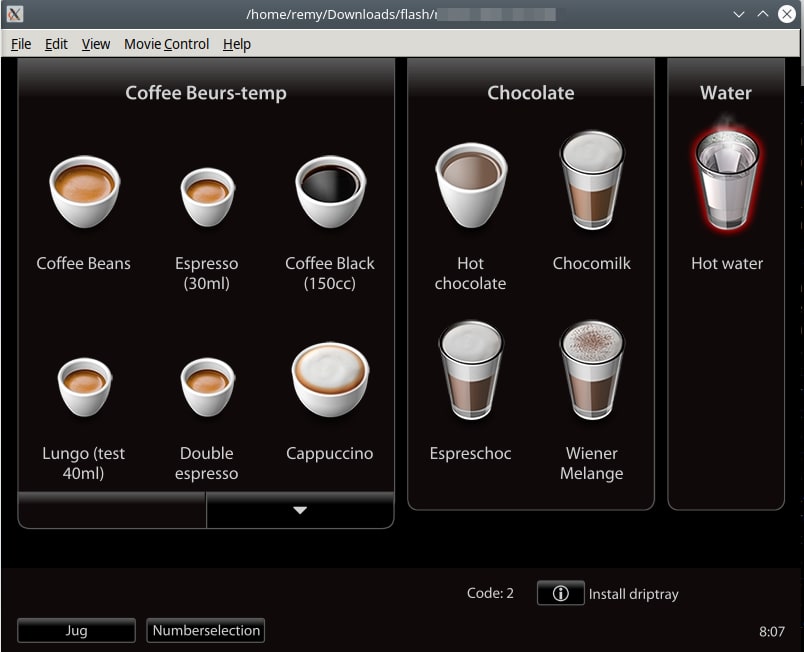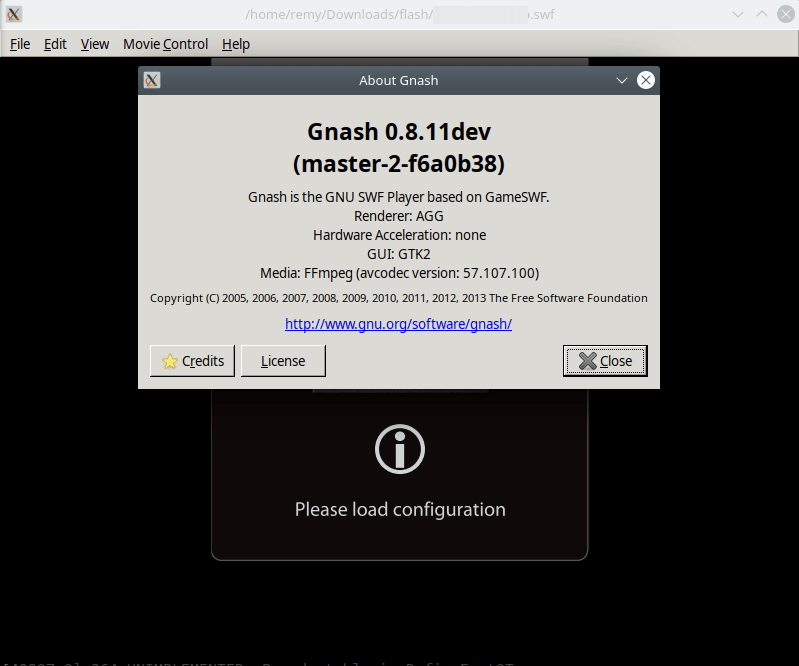



To use gnash on the command-line you can use use the command gnash-raymii ~/flash-file.swf.
To use the commands you must prefix them with the snap name. (gnash-raymii.dump-gnash).
GNU Gnash is the GNU Flash movie player — Flash is an animation file format pioneered by Macromedia which continues to be supported by their successor company, Adobe. Flash has been extended to include audio and video content, and programs written in ActionScript, an ECMAScript-compatible language. Gnash is based on GameSWF, and supports most SWF v7 features and some SWF v8 and v9. SWF v10 is not supported by GNU Gnash.
https://www.gnu.org/software/gnash/
The snap source code is here: https://github.com/RaymiiOrg/gnash-snap/
# Changelog
No new version of gnash will come out since development stopped around 2011, this is the changelog of the snap.
## 0.8.11-1
gnash-raymii is now the main package name and command (no longer required to write gnash-raymii.gnash)snapcraft.yml file to expose more gnash commands:dump-gnashgtk-gnashcygnalrtmpgetgprocessorflvdumpersoldumperTo use the commands you must prefix them with the snap name. (gnash-raymii.dump-gnash).
To use gnash on the command-line you can use use the command gnash-raymii ~/flash-file.swf.
## 0.8.11
You are about to open
Do you wish to proceed?
Thank you for your report. Information you provided will help us investigate further.
There was an error while sending your report. Please try again later.
Snaps are applications packaged with all their dependencies to run on all popular Linux distributions from a single build. They update automatically and roll back gracefully.
Snaps are discoverable and installable from the Snap Store, an app store with an audience of millions.

If you’re running Kubuntu 16.04 LTS (Xenial Xerus) or later, including Kubuntu 18.04 LTS (Bionic Beaver) and Kubuntu 18.10 (Cosmic Cuttlefish), you don’t need to do anything. Snap is already installed and ready to go.
Versions of Kubuntu between 14.04 LTS (Trusty Tahr) and 15.10 (Wily Werewolf) don’t include snap by default, but snap can be installed from the command line as follows:
sudo apt update
sudo apt install snapd
To install gnash-raymii, simply use the following command:
sudo snap install gnash-raymii
Browse and find snaps from the convenience of your desktop using the snap store snap.

Interested to find out more about snaps? Want to publish your own application? Visit snapcraft.io now.